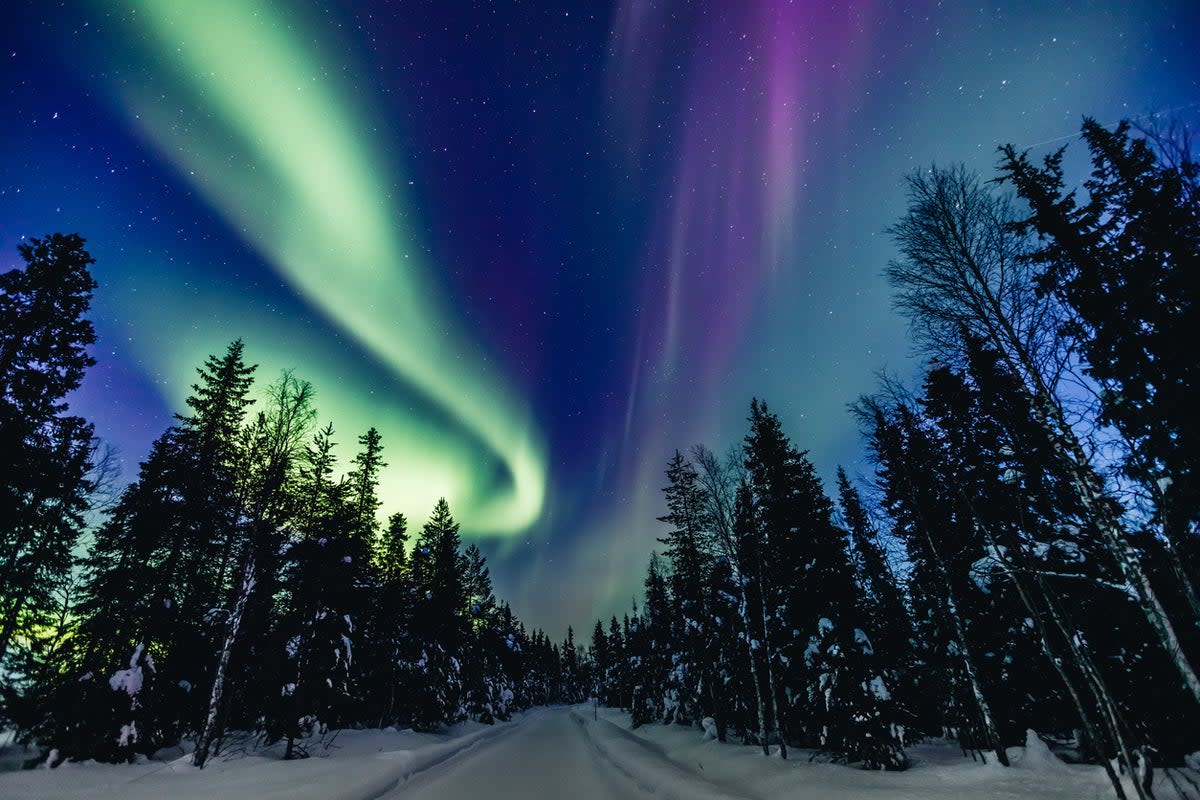Northern lights - live: Aurora borealis won’t be visible over US after forecast changes

The northern lights are set to be visible over much of the US this week.
Unusual activity on the Sun means that the spectacle – usually limited to areas near the far north and south poles – could be visible across 17 states as well as in Canada.
The northern lights, which are also known as the aurora borealis, are the result of solar storms on the Sun that rain down charged particles onto the Earth’s atmosphere. As the two collide, they light up with swirling, bright lights.
The Sun is entering a particularly busy part of its 11-year cycle that will peak in 2024. As such, the latest show might be just one of many that could be visible in the years to come.
The spectacle could be visible across Alaska, Oregon, Washington, Idaho, Montana, Wyoming, North Dakota, South Dakota, Minnesota, Wisconsin, Michigan, New York, New Hampshire, Vermont, Indiana, Maine and Maryland, according to The Geophysical Institute at the University of Alaska at Fairbanks.
Solar storms should make Northern Lights visible across the United States
19:31 , Graeme Massie
Animated forecast predicts where lights will be visible
18:14 , Andrew Griffin
The National Oceanic and Atmospheric Administration (NOAA) operates an animated forecast, where you can see the areas that aurorae could hit.
You can find it here, along with other information about the northern lights.
When is the best time to see the show?
18:13 , Andrew Griffin
Experts recommending looking out between 10pm and 2am, on the night of the 12 and 13 July. Heading out somewhere more remote and darker will make them easy to see – especially in more southern areas, where the show will be lower on the horizon and less clear.
Hello and welcome...
18:11 , Andrew Griffin
... to The Independent’s coverage of the upcoming northern lights.


